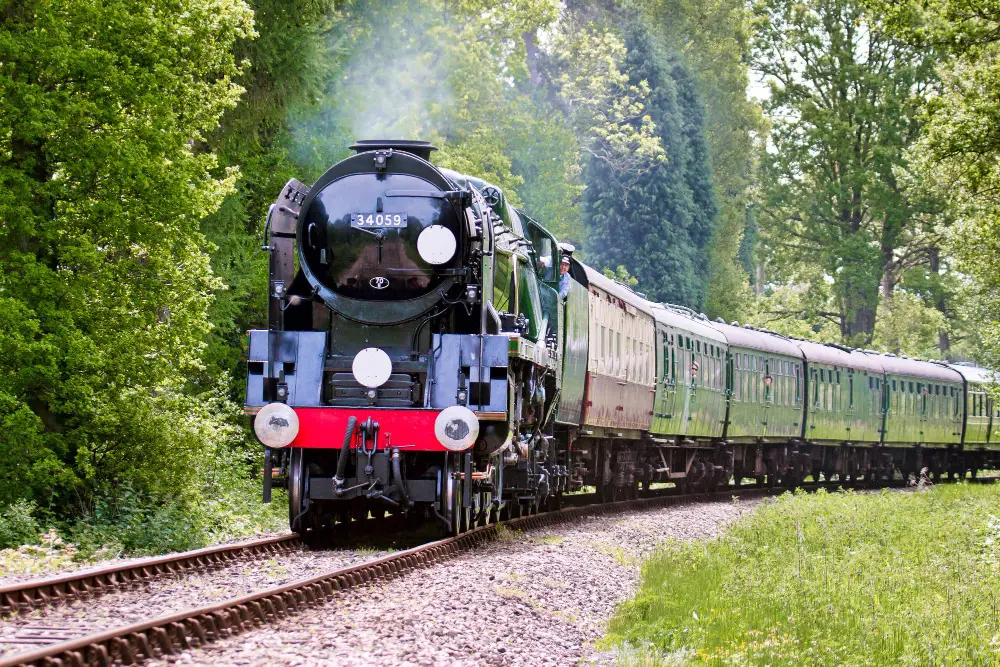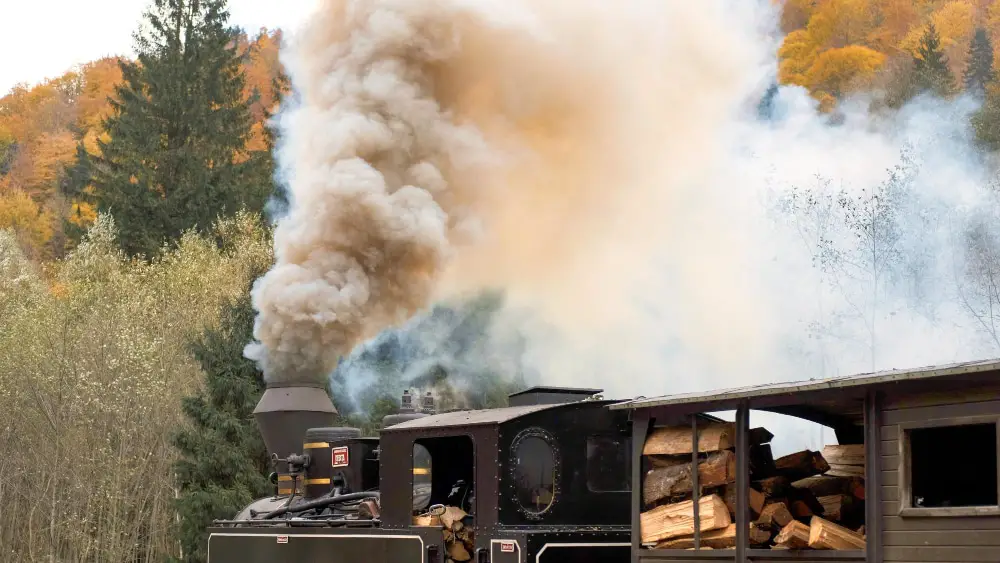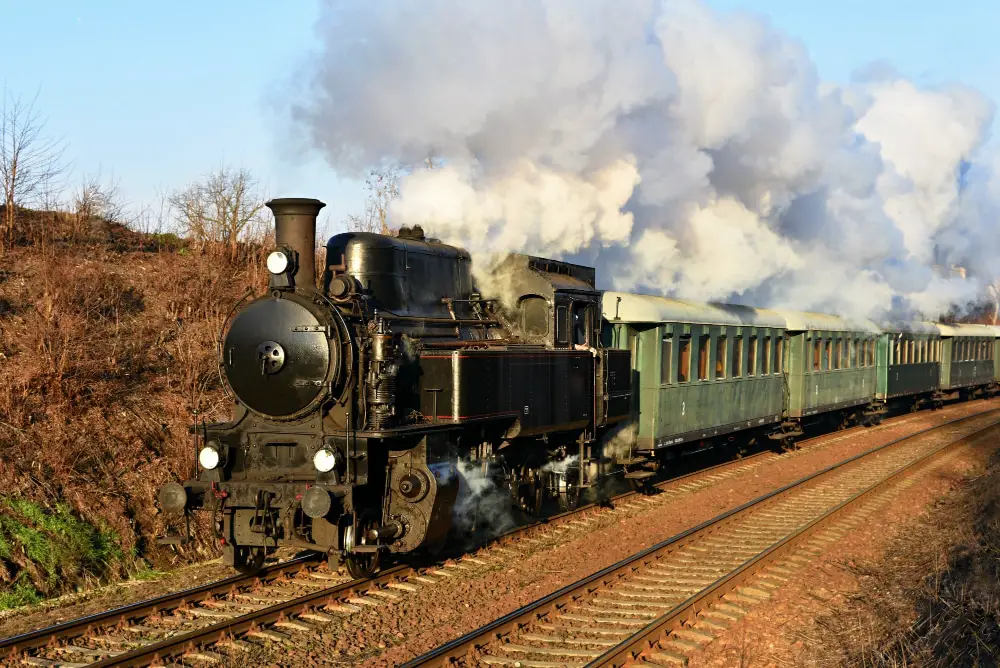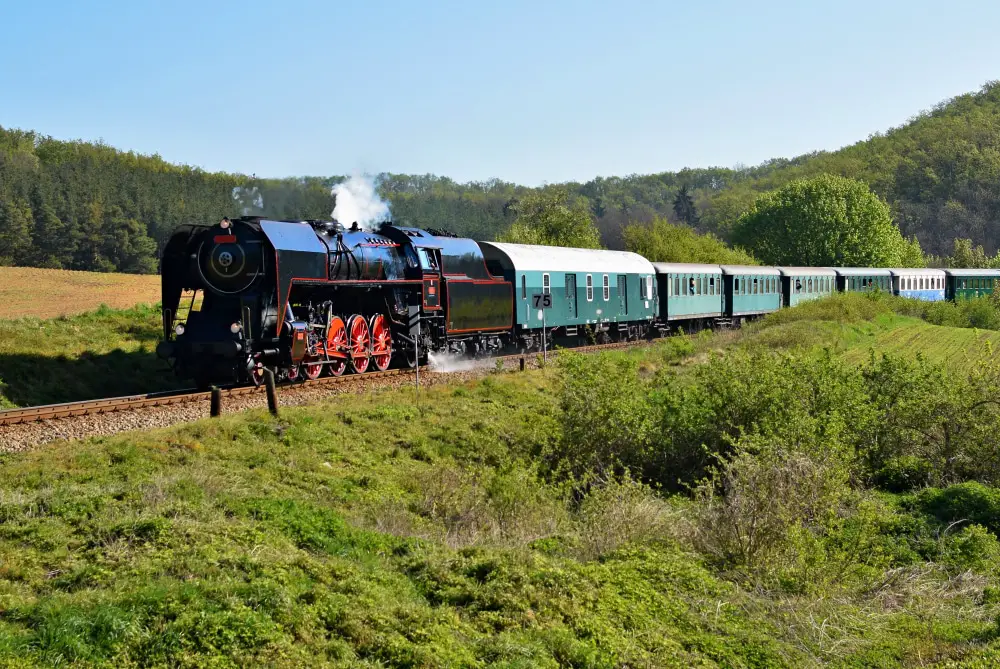So, when did trains stop using coal? Trains started converting from steam to diesel and electric power in the 1930s. By the 1980s, you really only saw steam locomotives using coal on heritage and tourist lines.

Undoubtedly, steam locomotives are a principal part of our railway system throughout the world. Without the invention of trains, we wouldn’t be able to see where we are today in regards to transportation.
Through the years, both trains and technology started evolving. This gave way to other power-source locomotives like diesel and electric power.
So, why and when did trains stop using coal? Let’s find out!
How Did Steam Locomotives Start?
The first-ever recording of a steam locomotive invention was in Britain. Trevithick built the Coalbrookdale Locomotive in 1802, but there were no signs of recording of its works. As a result, Trevithick continued his work with railway companies in northeast England.
In 1812, the steam locomotive made its first success. Steam locomotives used to run on oil, wood, or coal that powered its engine. Soon, more and more railway companies started using coal to run both freight and passenger trains.
The downside to steam locomotives was the smoke and noise from where the train and tracks are. Many cities during the 1800s to 1900s refused to allow steam locomotive tracks to be built within their area because of the possible pollution it would cause.
Soon, people started looking for other alternatives to replace steam locomotives.

When Did Trains Stop Using Coal: By Continent
After one hundred years, other power alternatives were introduced which resulted in the decline of trains using coal. Trains gradually decreased the use of coal in the 1930s during the introduction of diesel and electric power locomotives.
Diesel and electric power are cost-efficient and provide reliable performance in contrast to steam power. Because of this, companies shifted from steam to diesel between the 1930s and 1960s.
It was not until the 1980s that trains stopped using coal entirely for freight and commercial purposes.
Today, you’ll only see passenger cars using coal for tourism in heritage sites. We will discuss this later on.
When Did Trains Stop Using Coal in the United States?
In 1949, the Gulf, Mobile, and Ohio Railroad was the first to convert its locomotives from steam to diesel. The same year, Lima Locomotive Works was able to complete their final steam locomotive order for New York, Chicago, and St. Louis Railroad.
Some shortline railroads in the US still operated their steam locomotives between the 1960s and 1980s. The Union Pacific 844, famously known as the “Living Legend”, last traveled in 2018 when it hit a pedestrian trying to take photos of the train. Since then, UP 844 has stopped operating.
When Did Trains Stop Using Coal in Europe & The UK?
The last steam-hauled service that ran the British Railways network was in 1968. Although, the British industry continued using steam locomotives until the 1980s. Today, “heritage” railway lines still run on coal for their touring trains.
With Britain’s mission to have zero emissions, the coal suppliers of these heritage sites will all close later this year. This might mean the end of the line for all vintage trains in Britain.
When Did Trains Stop Using Coal in Asia?
Japan started shifting from steam locomotives after the Second World War. In 1976, their last steam locomotive made its final run from the Oiwake railway station. Today, the JR Railways Group still operates several passenger trains for special services.
In China, the Sandaoling Coal Mine Railway (their last steam railroad) ran its final steam locomotive last April 25, 2022.
The only places you’ll see steam locomotives in action are in Bosnia, China, and North Korea. Although, they are only used for small switching operations.

Electric Power Generation: Indirect Power from Coal
Even though steam locomotives are entirely fazed out, most trains still get power indirectly from coal. That is because Third Rail Supply or Rail Overhead Power Supply uses coal-based thermal power plants to power trains.
Coal-fired power plants burn coal to produce steam and generate energy. Almost 40% of the world’s energy comes from coal. India and China get 70%-75% of their energy from coal-fired power plants, while South Africa gets almost 94% from the same source!
Environmental Impacts of Burning Coal
It would be more than 50 years before we can replace using coal as our source of energy. Because of continuously burning coal, we are putting our ecosystem in danger. Here are some of the environmental impacts that we experience from burning coal for energy:
- Water Pollution
Cleaning the coal with water removes 50% of its ash content. This produces less carbon dioxide and sulfur dioxide that are released into the air. When power plants get water from the environment, it’s directly affecting the aquatic life and endangering the fish and animals that thrive on it.
Additionally, releasing used water back into the environment can cause more damage to the wildlife. This is the reason why proper monitoring and regulation are important for these corporations.
- Air Pollution
Burning coal alone releases pollutants in a small matter. Releasing oxides of sulfur and nitrogen to greenhouse gasses which include methane and carbon dioxide. All these pollutants are some of the worst contributors to climate change and global warming.
Coal as the Number One Commodity of the U.S. Railroads
Even though trains stopped using coal, you can still see them hauling it around the U.S. That’s because there are five states in the U.S. that continue to produce coal for the country.
Transporting tonnes of coal is not an easy task and freight railroads make this feat possible. By being a cost-effective and efficient mode of transportation, railroads are able to transport coal throughout the country.
In 2021, U.S. railroads were able to move 3.3 million carloads of pure coal. Each loaded car can produce power for 19 homes for a full year.

When Did Trains Stop Using Coal? – Conclusion
Trains stopped using coal for steam locomotives between the 1960s and 1980s. Even though steam power was replaced by diesel and electric locomotives, trains still use coal as an indirect power source through electricity.
Almost the entire world’s electricity is run by coal-powered power plants which are why freight railroads are still filled with coal each and every day.
